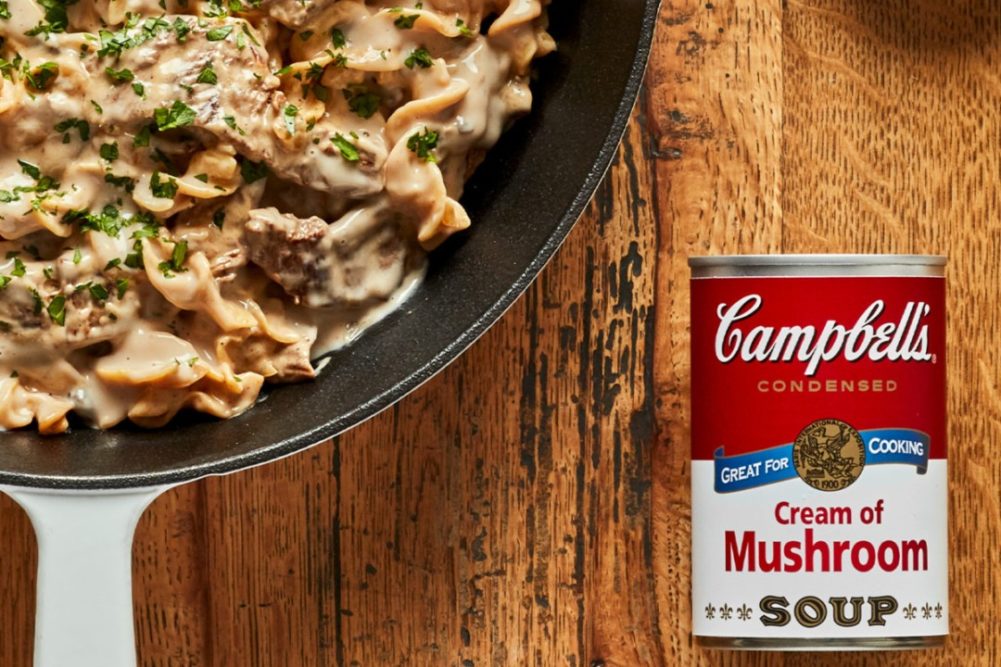CAMDEN, NJ. – The coronavirus has been disruptive to the Campbell Soup Co.’s operations, but it also has accelerated management’s strategic plan. Fiscal 2020 was to be a year of stabilization and fiscal 2021 was to be a year of growth. But significant growth occurred during the second half of fiscal 2020 and now management is focused on maintaining it into fiscal 2021.
“I think the best way to describe where we are right now is that we’ve, through the pandemic, been able to jump forward on that strategic journey,” said Mark A. Clouse, president and chief executive officer, during a Sept. 3 call with analysts. “And if you go back and kind of think about what did we set out to do in ‘20, it was really to strengthen the base, improve quality, make some material investments in the business to begin to reestablish or rebuild that relevancy and then begin to build back the innovation funnel. If you kind of think about what we then accomplished in ‘20 really across the board, we went well beyond what our expectations are.”
Net income for the fourth quarter ended Aug. 2 was $86 million, equal to 28¢ per share on the common stock, and an improvement over the same period of the previous year when the company recorded a loss of $8 million.
Sales for the quarter were $2.1 billion, up from the previous year when sales were $1.78 billion.
“We added millions of new households,” Clouse said. “And even if the retention of those new consumers is modest, it will still fuel substantial incremental growth to our originally planned trajectory. In particular, it has added significant confidence around, perhaps, our biggest strategic question, which has been our ability to stabilize and build relevance around our soup business.”
Soup household penetration increased more than 5% when compared to the fourth quarter of fiscal 2019, according to the company.
“Soup household penetration increased over 5 percentage points versus the same quarter last year,” Clouse said. “We gained 6.4 million households across all generations with continued gains among the millennial cohort. Notably, these gains were most pronounced across our condensed icon soup business, which was where we really increased investments around cooking, new usage ideas and more summer recipes.”
Net income for fiscal 2020 totaled $1.6 billion, equal to $1.96 per share, and a significant increase over the $211 million, or $1.57 per share, the company earned in fiscal 2019. Pushing the company’s full-year net income so high was $1 billion in earnings from discontinued operations.
Sales for the year totaled $8.7 billion, up from $8.1 billion the year prior.
The company is now developing a strategy to manage its fiscal 2020 growth in fiscal 2021.
“As we look to fiscal 2021, the continuing effect of COVID-19 creates a volatile operating environment, making it difficult to provide a full-year outlook at this time with sufficient certainty,” said Mick J. Beekhuizen, chief financial officer. “From a demand perspective, based on the current environment, we expect demand to remain elevated during the first half. Although moderating from Q4 fiscal 2020, given a continued but decelerating tailwind from COVID-19 and the fact that many COVID-19 impacted products like soup, have larger comparable basis as we head into the fall and winter.
“Moving on to the second half of fiscal 2021, and assuming a transition to a more normal environment, we will be lapping the significant pantry load and onetime effect that COVID-19 had on our business in the second half of fiscal 2020. We are making every effort to mitigate that impact by retaining new households, sustaining consumer behaviors and new product innovation.
“Nonetheless, we do expect net sales to decline given the significant onetime nature of last year’s growth. In the back half of fiscal 2021, and as we lapped this past year’s COVID-19 related costs, we expect to have opportunity, although we expect those gains are not likely to fully offset the impact from value lines.”
But Clouse added that much of the strategy for fiscal 2021 remains to be implemented, particularly around innovation and in-store sets.
“We’ve done a lot of work on this behavior of increased cooking and quick-scratch cooking, in particular,” he said. “And we’ve built now a series of insights that give us a lot more confidence that this is going to sustain beyond just the pandemic period.”
Three specific areas of opportunity he highlighted included portfolio optimization.
“How do we really think about optimizing the effectiveness of our offerings to really match where consumers needs are and to create room for what we think is going to be meaningful innovation while setting up a more efficient overall approach to the portfolio,” he said. “I think the second area is, as we’ve seen kind of full utilization across our entire supply chain and route to market.”
Finally, he said another area of opportunity is learning from the virtual work environment the pandemic has made so many companies adopt.
“Do you need as much travel?” he asked. “Do you need quite the infrastructure that you might have? Can you figure out a way to take what has been working very effectively for the company and use that as a little bit of a blueprint?”


